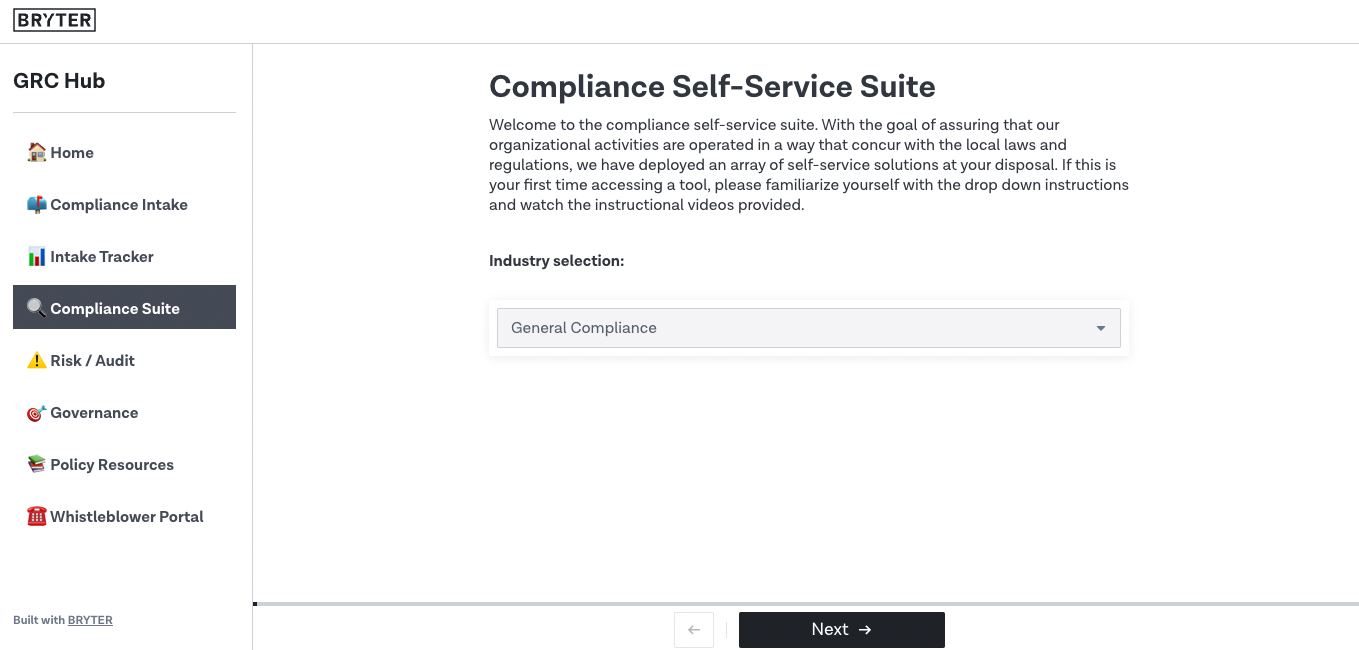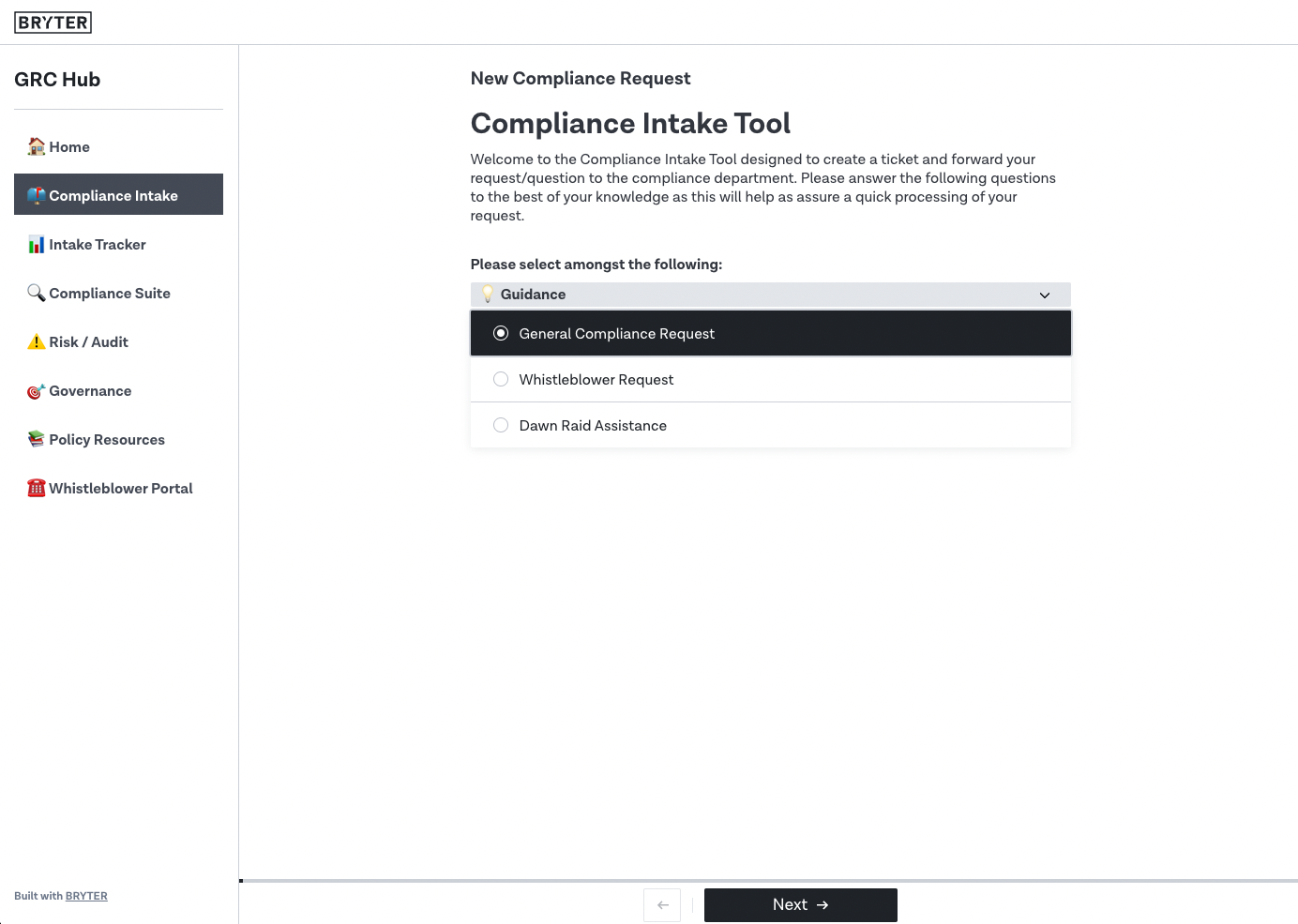Operating a business is risky, regardless of industry. On top of the economic risks, there’s a plethora of shifting laws, rules, regulations, and ethical standards that apply to every industry. Failing to abide by these requirements opens organizations up to lawsuits, regulatory penalties, and loss of reputation.
Success in modern business requires proactively identifying risks that threaten your organization and taking practical steps to mitigate those risks. Corporate compliance programs are dedicated to ensuring that organizations can operate efficiently and grow safely within the boundaries prescribed by governing sources.
To understand how compliance programs do this, we’ll examine what corporate compliance is, the responsibilities of the modern corporate compliance program, the challenges of modern compliance, and some of the ways digital solutions are supporting modern compliance efforts. We’ll also answer some frequently asked questions regarding corporate compliance.
What is corporate compliance?
Simply put, corporate compliance is the process of ensuring that a business abides by all applicable laws, regulations, rules, and standards. This involves an array of activities meant to guide the company and its employees’ behavior, so the business remains compliant.
As anyone in business knows, applicable laws and regulations change, both within and across industries. This means corporate compliance is not a task to be completed and crossed off a list, but rather an ongoing process. To address this need, many businesses opt to have dedicated compliance teams or departments whose sole function is to carry out the activities required to remain compliant in an evolving landscape.
With that in mind, let’s turn our attention to the responsibilities of compliance teams in a business.

Responsibilities of compliance teams
The primary responsibility of compliance in business is mitigating risk. By staying compliant, businesses are shielded from regulatory penalties and lawsuits.
As we’ve outlined, compliance and risk management involve meeting various standards and abiding by applicable laws. Therefore, compliance teams’ responsibilities look different based on which rules and standards apply to their industry and their organization’s activities. These responsibilities also change when the business has separate governance or risk management teams.
Although regulations and standards vary between industries and businesses, there are some concerns and activities that are common to almost all corporate compliance efforts.
Key areas of concern for corporate compliance
Compliance and risk management teams in all industries are keenly focused on protecting their businesses from harm by managing risks and mitigating them whenever possible. Thanks to this common goal, some areas are almost of universal concern for compliance professionals.
- Identifying risk – Compliance teams will do their best to identify threats to their organization before they become an issue.
- Preventing risk – Once risks have been identified, efforts will be spent to develop and put controls into place to protect the business from those risks.
- Monitoring risk – Keeping track of risk prevention efforts is key to assessing their effectiveness.
- Correcting risk – When new risks are identified, the compliance team will adjust controls as needed to resolve these issues.
- Providing guidance – Compliance teams use their expertise to guide the organization’s members in their efforts to remain compliant.
Key compliance activities and examples
Identifying risks is just one part of a compliance program’s proactive risk management. To ensure an organization’s day-to-day activities do not run afoul of legal or ethical standards, compliance teams take a variety of measures. Let’s look at some examples of the most common compliance activities across industries.
- Establish and maintain a code of conduct – Once risks and applicable legal standards have been identified, compliance efforts are generally allocated to putting policies and procedures in place that are aligned with the goal of minimizing these risks and abiding by these standards. This often manifests as a business’s formalized code of conduct.
- Provide training to employees – Since corporate compliance is the responsibility of all members of an organization, the compliance team must provide training to ensure everyone is aware of the policies and procedures in place to manage compliance.
- Audit and report – Proactive review of compliance efforts and reporting the results helps to ensure that members are abiding by set policies and procedures. It also allows compliance teams opportunities to take corrective action or provide additional training as needed. Sometimes, however, audits and reports are a legally mandated part of a compliance team’s efforts.
Challenges of modern corporate compliance
As modern businesses continuing to grow and become increasingly decentralized and digitized, compliance teams are entrusted with an increasingly complex task. This uptick in complexity presents an array of new challenges for corporate compliance programs, so let’s take a quick look at a few of the most pressing concerns to better understand the realities of modern compliance.
- Shuffling limited capacity to address new complexities
Chief Compliance Officers (CCOs) and their teams provide guidance on issues ranging from Data Protection to Export Controls, but 87% of senior compliance professionals have no additional capacity for their efforts because of staffing limitations. Identification of new compliance issues requires that resources are diverted from other concerns, leaving gaps for issues to slip through.
- Increasing regulatory scrutiny
70% of CCOs expect regulators’ focus on compliance to continue to increase. This uptick puts mounting pressure on compliance departments already struggling with limited resources.
- Monitoring compliance at a distance
The increased regulatory scrutiny coincides with a transition to remote work environments: 60% of CCOs now oversee compliance teams that work remotely at least half the time. Disconnects resulting from a newly remote workforce presents communication and coordination difficulties that bog down issue response times, decision making, and business operations.
Examples of corporate compliance topics and tools
While each business is different, many compliance activities are simply part of the reality of conducting modern business. These concerns are so commonplace that most compliance programs will address them, regardless of industry.
- Data protection – The way modern businesses collect, handle, and dispose of the data they collect is governed by both legal requirements and ethical concerns. Using tools like the Data Breach Reporting Assistant, compliance teams can easily manage and escalate data protection breaches.
- Corruption and ethics – Compliance teams must prepare for and provide business guidance on ethical concerns ranging from conflicts of interest to gifts to bribery. Employees can quickly understand and get guidance on these issues with an automated Corporate Compliance Advisor.
- Environmental laws – Businesses must comply with environmental laws and regulations from the national down to the local level, and these regulations cover topics ranging from energy-use to water runoff. Compliance teams can easily identify risk and navigate disclosure requirements with digital solutions like an ESG Investment Check.
- Securities laws – Any company that issues securities, both publicly traded and privately held, must comply with applicable securities laws. This includes things like disclosure and reporting requirements, as well as record retention requirements.
- Communications regulations – Businesses that sell products to consumers must be sure to treat customers fairly, and most are obliged to comply with various advertising and fraud regulations.
- Facilities management – Businesses must operate and maintain their buildings according to zoning ordinances, safety regulations, and accessibility requirements.
Modern digital corporate compliance
More and more often, corporate compliance programs are turning to tech solutions to leverage their existing resources. Using these tools, compliance programs can automate compliance functions and processes and streamline workflows to proactively manage risk.
Technology allows compliance departments to recapture limited resources and provide meaningful guidance, on-demand when called upon. Let’s examine some of the specific benefits automation provides to modern compliance programs.
1. Save time on intake to spend it where it counts
With digital services, intake of new compliance requests can be managed using a customizable questionnaire. The intake process can be configured to initiate appropriate workflows based on user inputs, including linking to a self-service app, requesting clarifying information, and automatically emailing necessary stakeholders.

2. Maximize resources using self-service and parallel processes
Automating high-volume, low-value tasks via self-service applications provides necessary services without tying up compliance professionals with rote, straightforward tasks.
Customizable questionnaires can simultaneously gather needed information and perform risk scoring in the background, ensuring that requests arrive in front compliance professionals only when necessary and only when ready. As a result, compliance teams using BRYTER no-code platform can accomplish more than teams relying on manual processes and non-specialized software.

The BRYTER Gift & Hospitality Checker, for example, allows users to determine whether gifts comply with company policy and applicable regulations, without involving a compliance professional. Instead of relying on half-remembered trainings or long policy documents, users fill out a customizable questionnaire with the details of the offer, and the application provides reliable, policy-driven guidance to the user automatically.

3. Allocate expertise based on real needs
Tech solutions make data tracking and visualization easy using dashboards. This simplifies trendspotting, so compliance efforts can be fine-tuned to better meet an organization’s actual needs and ensure compliance expertise is not wasted.
4. Improve accessibility to compliance resources
Providing compliance functions via online, custom applications means compliance has a digital front door that is never more than a few clicks away. Employees have access to expertise regardless of location or time of day.

5. Adapt quickly to changing circumstances
An easy-to-use building interface allows anyone in the compliance department to build and update applications without involving the IT department. This means updating applications in response to regulatory changes is fast, minimizing downtime and reducing risk.
6. Provide consistency and accuracy
Automated workflows built with BRYTER are conducted using the same underlying custom logic every time. This ensures that similar requests are processed the same way each time, reducing margins for error and providing stability. Reports can also be automatically generated using custom templates, ensuring consistent form and style.

FAQs about corporate compliance
Corporate compliance is the practice of using internal policies and procedures to minimize risk and prevent violations of legal and ethical standards.
Simply put, the purpose of a corporate compliance program is to protect the company from fines, lawsuits, and reputational damage.
Corporate compliance is important because it helps save money that would be lost due to fraud, discrimination, or waste. It also protects the company’s brand and reputation from scandals and ensures that the company is operating ethically.
Every member of a business organization is responsible for compliance. Compliance professionals provide guidance and expertise in these efforts.
GRC stands for governance, risk, and compliance, which is the practice of integrating corporate governance, risk management, and corporate compliance. Corporate governance is the system of rules and processes regarding how the company is operated and regulated. Risk management is the process of identifying and reducing hazards to a business.
The two main types of compliance are internal compliance, also known as corporate compliance, and external compliance, also known as regulatory compliance. Regulatory compliance is focused on establishing and maintaining compliance with external regulations, such as laws and government regulations. Corporate compliance is focused on establishing practices and procedures to establish and maintain compliance with internal policies and standards.
A compliance audit is a formal review of a business organization’s compliance with respect to applicable laws, rules, regulations, internal policies, and procedures. Compliance audits may be required by industry laws or may be carried out voluntarily by a business organization as part of its compliance monitoring efforts.
Get started automating compliance efforts today
Now we’ve explored what corporate compliance is and have seen that, as modern business landscapes continue to evolve, corporate compliance programs will face new and unexpected challenges. Luckily, there are already digital tools that can help compliance teams meet these challenges with confidence and flexibility.
If you’d like to learn more about how automation can help you get the most out of your compliance efforts, set up a free ideation session with one of our automation experts today. Or if you’d like to know more, check out our GDPR Compliance Software page or the report from BRYTER and Compliance Week on How Technology Enables Data Protection.











